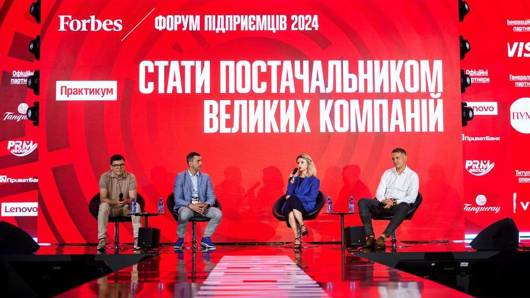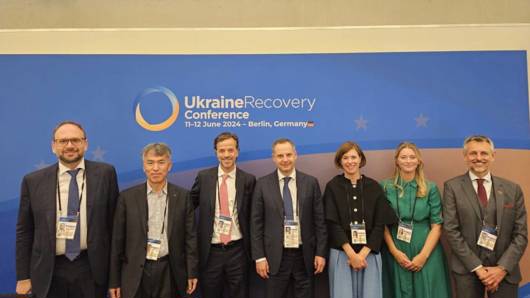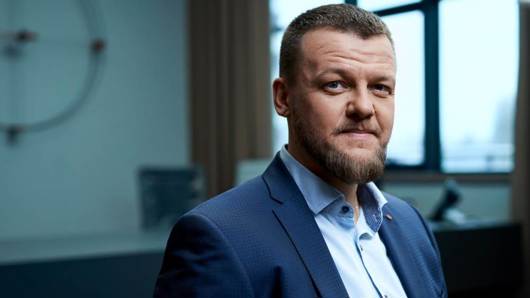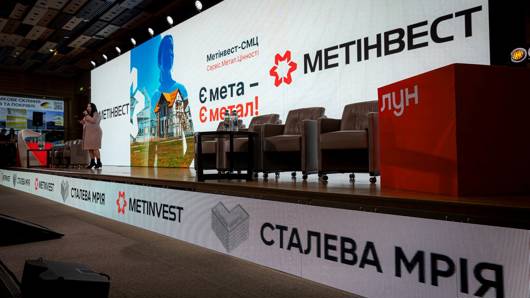Yuriy Ryzhenkov, CEO of Metinvest Group, gave an interview to Bloomberg Television, a global leader in business information and news. He spoke about the consequences of the recent Russian attacks on the Group, the impact of the war on production and sales markets, as well as shared market assessments and plans for the Group’s green transformation.
– Over the last few days, Ukraine, especially its energy infrastructure, has been under significant attack. How has this affected your work?
– Yes, the country’s infrastructure has been under attack since the late spring of this year, and we have been relying on electricity imports and our own generation to keep our assets operating. Unfortunately, the attack on Monday caused disruption to our operations. Most large industrial companies already have a plan B or plan C to deal with such attacks. For example, Metinvest has its own generation, which allows us to avoid any technological disasters in the event of a power outage. We can either idle our facilities or wait until the electricity supply is restored. But in general, the electricity supply in Ukraine is currently very unreliable.
– How much steel are you producing compared to the pre-war period?
– Before the full-scale war, Metinvest produced around 14 million tonnes of steel. Now we are producing approximately 5.5-6 million tonnes.
– This is about half of the previous volume. Where is it sold? What is it being used for?
– We mainly supply steel to Ukrainian customers. Ukraine still has a well-developed machine-building industry and construction sector. In addition, we export significant volumes of steel to European customers. These are mainly in the Mediterranean region and Eastern Europe – Poland, Slovakia, Romania and Bulgaria.
– If we were to see a peace deal, how quickly could you get back to pre-war production volumes?
– It is virtually impossible, because these 14 million tonnes include the production of two large steel mills in Mariupol – Azovstal and Ilyich Steel. They have been destroyed, and there is no question of rebuilding them. We will consider building new, green steel plants or decarbonised steel plants. This is the future of the Ukrainian steel industry. By the way, we are currently working on the construction of such a plant in Italy. This pilot project, which we will implement in partnership with Danieli, will become the basis for scaling up once Ukraine’s recovery and the construction of new facilities begins.
– How much steel would that require? At the moment, you talk about exports, but will the country need more steel than it can currently produce?
– Currently, Ukraine has very low steel consumption: about 100 kg per person per year. If we are talking about Eastern Europe, steel consumption there ranges between 300-500 kg per person per year. This means that Ukraine could increase its steel consumption by around three to five times. Moreover, even now Ukraine exports about 80% of its steel production. So, the volumes that Ukraine produces now will be enough to meet internal demand, even if the country reaches global benchmarks.
– Does this amount include the restoration and construction of the infrastructure that Ukraine needs?
– Yes, it includes all of that. If we look at the largest steel consumers in the world, such as South Korea and some European countries, such as the Czech Republic, they have developed machine building, appliance manufacturing and construction industries. Ukraine can help all these countries. And yes, it will have enough steel, even at current levels, to support such industries.
– In your opinion, what is happening to global steel prices? Iron ore prices have fallen sharply. China has excess production capacity. Have we reached the bottom or will prices continue to go lower?
– This is a natural cyclicality of the steel industry, which has existed since its inception a couple of hundred years ago. Cyclical fluctuations are typical for the industry. We see that many producers, especially in China, are already producing and selling products below cost. This means that we are quite close to the bottom of the cycle. But anything can happen in the steel industry. We saw a very successful 2021, but the steel industry has also had very difficult years in the past. Hopefully, we are at the bottom of the cycle and ready to come out of it.
– Do you plan to increase production volumes in Ukraine, at the Italian plant or elsewhere? Are you considering new partnerships and asset acquisitions in the future?
– Metinvest has a fairly good resource base in Kryvyi Rih, which can be improved to support green steel production in Europe. We are the largest source of pure raw materials for green steel production on the European continent. Our strategy is to develop green steel production in Ukraine. Obviously, we have to wait until the war risks decrease considerably before we can make significant investments in Ukraine. At the same time, we are considering building or acquiring new green steel production facilities outside Ukraine that will use Ukrainian raw materials. We plan to build one of these plants in Italy. But we are also open to other opportunities, including acquisitions in neighbouring countries.










